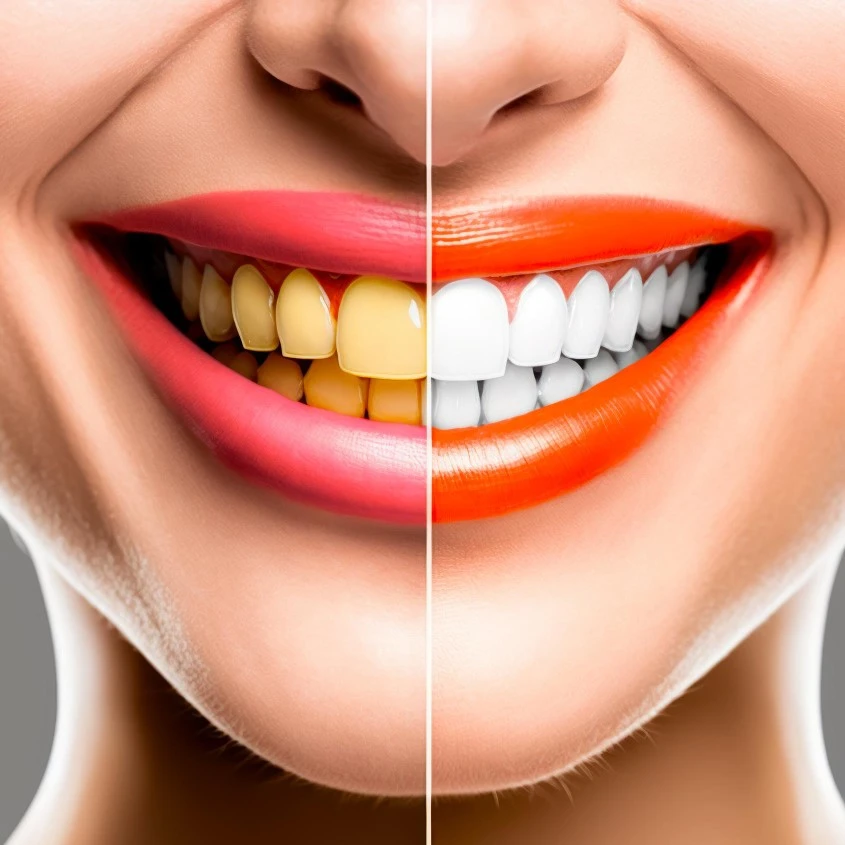Hey! We Are Dentist
Teeth Whitening
Not everyone’s teeth are suitable for whitening, nor will one set of teeth whiten like another.
Teeth and gums must be healthy before teeth whitening can be considered.
A full dental examination with radiographs should be done by a dentist to check for tooth decay, receding gums, existing restorations (as these will not whiten), current sensitivity, need for a scale and clean (as sometimes a clean will give patients a satisfactory whitening result).
What are some things to consider with tooth whitening?

Sensitivity
Teeth can become hypersensitive to cold drinks/foods, air and may develop transient “zinging”. Sensitivity caused by tooth whitening will usually dissipate once whitening has stopped.
Multi coloured teeth
If there are fillings, crowns or veneers in the smile line, these will not whiten and will require changing in order to match the new shade of the natural teeth
Take Home Whitening
For those who prefer to whiten their teeth in the comfort of their own home, we offer professional whitening which is only available from your Dentist. Patients are required to have a comprehensive examination and impressions are taken of your top and bottom teeth. We then create perfect fit whitening trays for best results. Generally, within 7-10 days the teeth will appear shades lighter.
Dissatisfaction
Unfortunately due to biology and the cause of the discolouration, not everyone’s teeth will whiten at the same rate or to the same degree. Teeth may only require two weeks of whitening, however in some cases the whitening process may be required for months. Results cannot be guaranteed. Patients need to be realistic about their expectations – “fridge white” is difficult to achieve with whitening alone – Celebrity Smiles are most often achieved with the addition of porcelain veneers or crowns.
There are no conclusive studies that show detrimental effects from tooth whitening. Guidelines are set by the Australian Dental Association in order to maintain proper practice and delivery of safe treatments.
If whitening does not achieve the result you hoped for you may want to talk to your dentist about other options.
What are common types of discolouration in teeth?
- Normal discolouration/yellowing of teeth with age due to internal change in the tooth
- Lifestyle staining – smoking, coffee drinking, red wine, tea
- Fluorosis
- Tetracycline staining (most difficult to whiten)
Root Canal Therapy normally takes several visits:
- Removal of the nerve and blood supply of the tooth and placement of an antibiotic paste and temporary filling (done with local anaesthetic)
- Removal of the remaining remnants of the nerve and preparation of the inside of the tooth for filling, placement antibiotic paste and temporary filling (done with local anaesthetic)
- Final preparation and filling of the canals (done with or without local anaesthetic)
- Filling over successfully completed root canal (done with or without local anaesthetic)
- Possible Crown Therapy
- Sometimes, a tooth may require a subsequent visit called a “redress” where another amount of antibiotics is placed to combat more severe infection.
